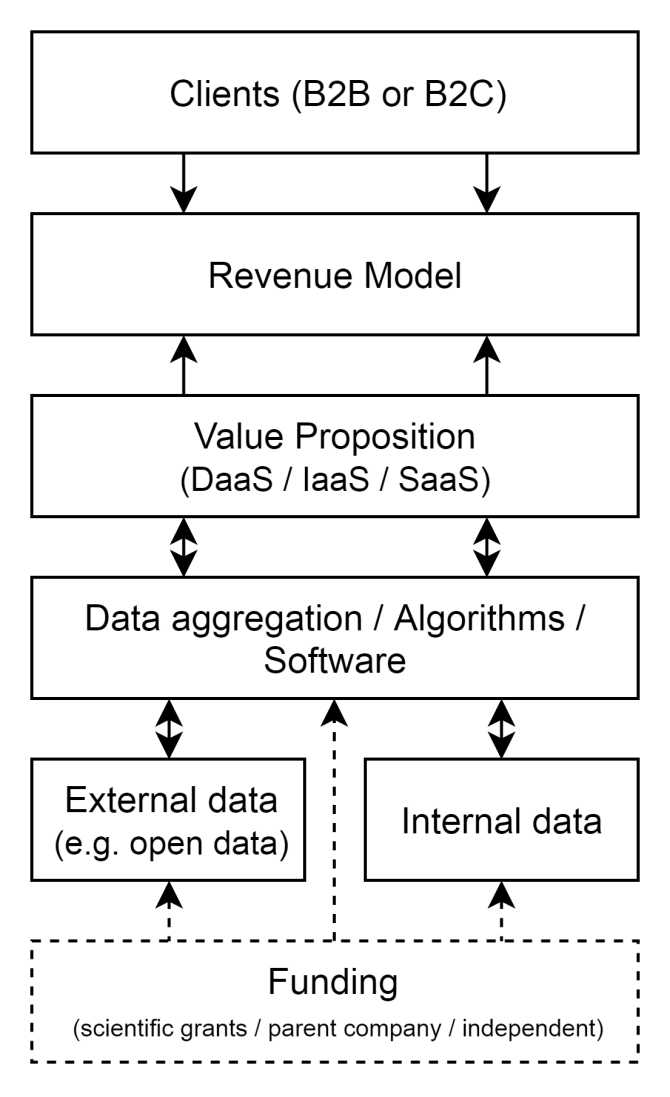
Use case
Big Data Value Models
Research becomes increasingly data-driven meaning that more and more data are being generated and made available for research. These data originate from a broad spectrum of sources, such as data from WUR research (e.g. from experiments), and also data from Internet of Things, sensors, large external datasets, etc. By combining these datasets, knowledge development can be improved, which instantly (real-time) can be used to advance processes for business and society. This requires a new approach to data-driven value creation within a very competitive environment in which multiple parties are trying to add value to partly overlapping data sources. It is therefore essential to develop new value creation skills and expertise that can be applied by WUR Business Developers and –Researchers.
Problem statement / motivation
The objective of this project was to acquire knowledge and insights into the role data plays (or could play) in the value creation process of WUR and make a first step in capacity building for this group of WUR employees. On the longer term this project will contribute to the development of WUR/WDCC as a Digital Innovation Hub (DIH).
Solution / approach
The project approach was targeted at developing a set of guidelines and references that will function as a knowledge base for WUR employees who want to create value of data-driven research. Three action lines were developed, i.e. (i) writing a white paper mainly based on desk research, (ii) identifying the current issues and challenges WUR employees are facing, mainly based on interviews and (iii) making an inventory of current data platforms and hubs that potentially can be used for big data research.
The results of these activities form the basis of and input for a WUR approach on ‘Big Data Value Models’ as presented by the steps in Figure 1. With these steps a specific business plan can be developed for data-driven research with a value creation component.

Figure 1 The approach within WUR that can be followed to create a use case-specific business plan
(Expected) impact of the approach
With this approach a transition can be made towards more data-driven research based on the combination of internal and external data. The results are made available through a website that can be enriched in the future with results of the application of this approach. At the same time WUR employees – especially Business Developers – were and will be trained in applying the approach within WUR.
Next steps
In this project three use cases were already involved: Akkerweb, Yield Gap Atlas and Consumer Data Platform. Preliminary business plans were developed for each use case, these need to be further elaborated and tested in practice. For that purpose a dedicated business developer was appointed for each use case. Other WUR Business Developers and related researchers need to be further trained in this area.
Box:
Facts & Figures
- Business Intelligence gives researchers important insights
in new business opportunities - A data-driven research approach
raises possible complex governance issues (e.g. on intellectual property
rights and data licenses)
- A catalogue with 50 platforms and hubs categorisedon value proposition, revenue model, funding, ownership and type of dataoffered and/or used; has been made available at http://wdcc.wurdata.com.
Tools used:
The following framework was developed and used to analyse the needs in data-driven research:

More information
Sjaak Wolfert
sjaak.wolfert@wur.nl
+31 317 485 939